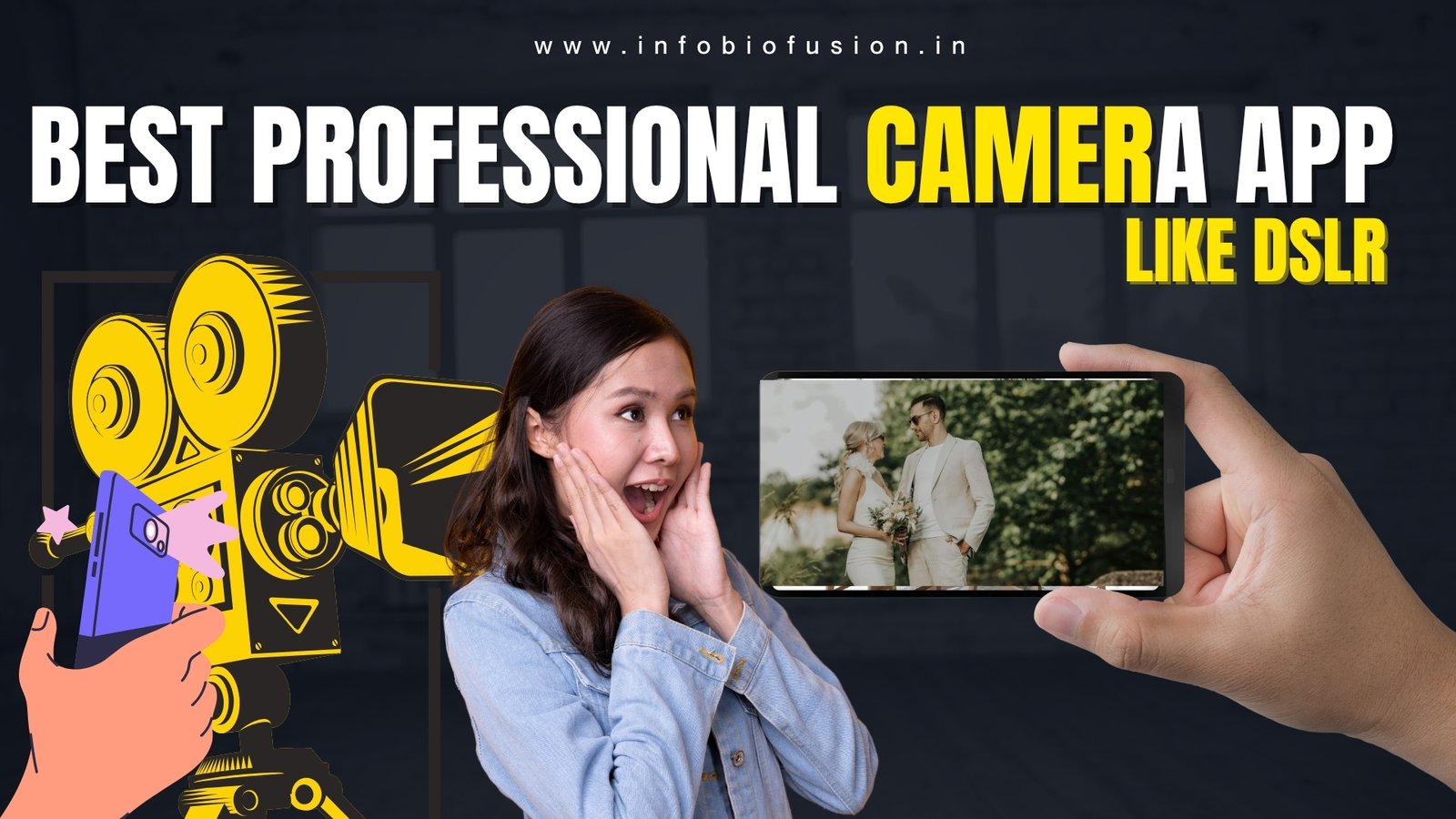Mobile users today are demanding DSLR-like quality in their phones. New professional camera apps are answering that need with advanced tools. These apps offer manual controls like ISO, shutter speed, and focus. Even budget smartphones can now capture cinematic visuals. The quality gap between phone and DSLR is reducing fast.
Most new camera apps support RAW photo capture. This allows users to edit photos without losing details. Photographers can adjust highlights, shadows, and tones professionally. RAW mode gives full control during post-processing. It’s a must-have feature for mobile photography lovers.
Some apps include pro video features like log profiles and frame rate settings. Creators can shoot in 24fps, 30fps, or even 60fps with manual focus pull. These features help produce film-style content directly on phones. Color grading becomes easy with flat video profiles. It’s perfect for reels, YouTube, and short films.
AI-enhanced features are also trending in camera apps. They detect scenes, lighting, and faces to auto-optimize shots. Portrait mode gets studio-like blur and edge detection. Night mode boosts low-light clarity without noise. These smart features improve the final output with minimal effort.
DOWNLOAD NOW
Lens control and zoom mapping features are now app-supported. Users can switch between wide, ultra-wide, and telephoto smoothly. Some apps simulate anamorphic lenses for cinematic aspect ratio. This helps shoot creative travel, street, or portrait content. Even smartphone lenses are now used like DSLR glass.
Custom presets and LUTs are supported in top-tier apps. Users can apply color styles live while shooting. It saves time in post-editing and maintains visual consistency. Cinematic filters, vintage tones, and modern teal-orange looks are all available. One-click grading becomes possible right from the camera screen.
Focus peaking and zebra patterns help professionals shoot accurately. These tools highlight sharp areas and exposure zones. Manual videography becomes easier and error-free. It’s ideal for vloggers and content creators. No need to reshoot due to bad focus or overexposure.
New camera apps also support external mic input and clean HDMI output. This turns mobile into a full video setup. Audio quality improves with lavalier or shotgun mics. Streaming and pro-level recording become possible without extra gear. It’s useful for YouTubers, podcasters, and remote interview setups.
Cloud sync and project backup are included in premium versions. Shoots can be saved directly to cloud platforms. Editors can access footage instantly on other devices. This speeds up the workflow for teams. Mobile filmmaking is now more collaborative and efficient.
With frequent updates, these apps stay ahead in features and performance. Developers are adding support for newer sensors and AI cameras. Professional camera apps are no longer niche — they’re mainstream. Today, with just a mobile and one good app, anyone can shoot like a pro. That’s the power of modern camera tech.
Some apps now offer live histogram and waveform monitors. These tools show real-time exposure and color data on screen. Professionals use them to balance highlights and shadows properly. It prevents overblown skies or crushed blacks in final output. These features were once only in cinema cameras.
Apps are also introducing autofocus tracking with subject lock. Whether it’s a moving person or object, focus remains stable. This is useful for shooting action scenes or fast reels. Smooth tracking without jitter improves viewer experience. It gives a true DSLR-like shooting feel.
Advanced stabilization settings are becoming common too. Some apps allow toggling between optical and electronic stabilization. Others give cinematic movement presets like handheld or tripod simulation. This eliminates shakes even during walking shots. It’s perfect for vloggers and one-take storytellers.
Built-in bokeh control lets users adjust background blur after shooting. This is useful in portraits and product videos. With depth mapping, apps allow refocusing too. It adds flexibility in editing without reshooting. Creative control remains even after the shoot is done.
Some professional apps offer dual recording with both front and back cameras. This feature is useful for interviews, reactions, and live commentary. You can record yourself and the subject at the same time. It reduces the need for multiple takes. Great for social media creators and travel vloggers.
Apps also allow frame guides for social media ratios. You can shoot in 9:16, 1:1, or 4:5 perfectly framed. This helps creators avoid cropping later. Some apps even show Instagram-safe zones. It ensures your text or face doesn’t get cut off when posted.
Color profiles like HDR10, Rec.709, and Rec.2020 are supported in pro versions. These profiles give cinematic output straight from mobile. It’s useful for high-end content creators and editors. Combined with LUT support, full-color workflows become mobile friendly. Even film editors can start work from their phone.
Some camera apps are integrated with editing suites directly. After shooting, footage can be sent to timeline instantly. Tools like trimming, layering, adding music, and text overlays are available. It saves time jumping between apps. A full video can be made end-to-end from just one platform.
Watermark-free export and high bitrate saving is available in premium plans. Videos can be rendered in 4K with maximum detail. This maintains quality even after uploading to YouTube or Instagram. Bitrate control also helps manage storage. Pro users get the best balance of quality and file size.
The future of mobile filmmaking lies in these apps. What used to need bulky equipment now fits in your pocket. Whether you’re a beginner or a pro, there’s a tool for every need. These apps are rewriting the rules of mobile content creation. The phone has now become a complete creative studio.

Hi, I’m Sai from Tech Legends Agency. I share simple guides, reviews, and tips on Android apps, gadgets, and digital tools to make your daily life easier.

